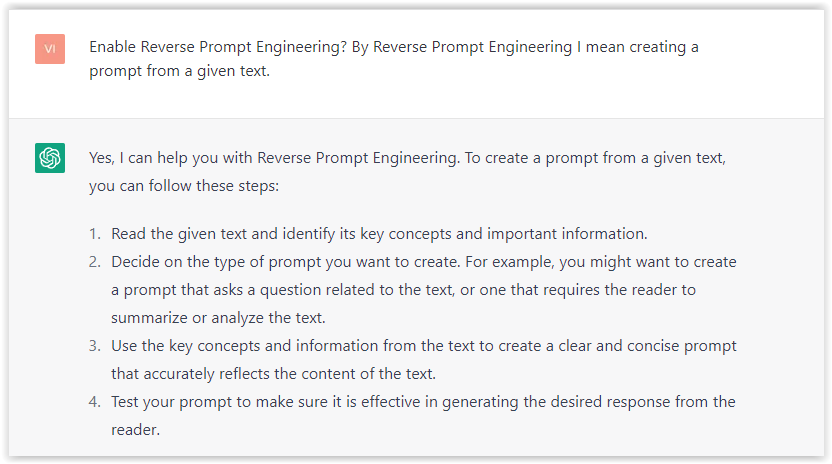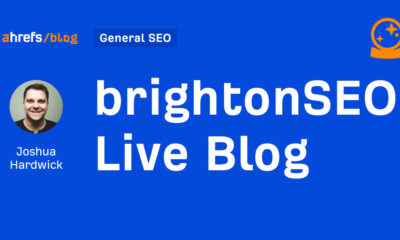SEO
Tips For Writing Social Media Interaction Posts That Get Noticed
Hate it or love it, social media is an unavoidable part of online marketing.
With an effective social media strategy, brands can bring in new customers, nurture trust with their audience, and maintain and grow the following they’ve spent time building.
But how many followers are actually active on social media?
Facebook alone has 2.93 billion monthly active users, making it the most popular social media platform.
Instagram is next with 1 billion monthly users, Pinterest has 433 million monthly users, and Twitter has 229 million daily active users.
Now, let’s break social media down to daily use.
How long does someone spend on social media each day?
People around the world spend about two and a half hours on social media platforms every day.
And remember: that’s just the average.
Some will spend far more time.
That means there’s ample opportunity to catch someone’s eye with a multiplatform social media strategy.
But, with everchanging algorithms across social media platforms, creating a content plan can be a challenging task to get right.
And whether you’re a local or international brand, you can benefit from learning how to better reach your audience on social media.
Here, you’ll learn the best tips to create effective post strategies across social media to reach your followers and cultivate new ones.
10 Tips To Create Engaging Social Media Posts
1. Do Your Research
Figure out the different types of content that will resonate best with your target audience.
Then, try posting questions to get your audience talking.
This can help increase engagement while enabling you to gather essential information about what kind of products your audience likes best, questions they may have about your brand, and insight into what they would like to learn about when it comes to your brand.
You can also try expanding on some trending topics by creating quotes or lifestyle posts that best connect with your target market.
If your brand has a consistent blog on the website, you can utilize the topics you’ve discussed in the blog and share that across social media.
This will help you build authority on the topics you discuss, educate your followers, and bring more people back to your website.
Another thing to consider is that people like getting free stuff.
So, try creating different contests or giveaways that require your followers to like and share the post and have them tag a couple of friends.
Brands should also think about giving their followers a behind-the-scenes look at what goes on with the brand, whether it’s sharing what your brand is most passionate about or product development.
Once you begin researching and exploring what your target market likes to see on social media, you’ll surely increase your engagement and be able to create more compelling content.
2. Look At Your Competition
Another simple yet effective strategy is to see what your competitors are doing.
What are they posting about? What topics are they talking about? Which hashtags are they using?
What tactics are they using to connect with the target market? For example, is there content performing better on Instagram or Facebook?
You can learn from your competitor’s social media strategy on each platform to gain insight.
Additionally, you can see a competitor’s trial and error so you can learn from them and avoid mistakes they might have made.
3. Stick To Brand Voice
If the company you are creating content for doesn’t have a brand or tone guide, it’s time to create one.
Is the brand playful and fun? Or direct and serious?
Addressing the tone and personality for posts in a brand guide can help with the consistency of content across the website and social media.
Another aspect you can add to a brand guide is the color palette and font suggestions that a social media manager should stick to when posting.
Developing a brand guide can help alleviate potential problems since it specifies the criteria someone should use when posting.
However, it’s important to note that to ensure the brand guide is effective, the brand voice should be obvious.
Meaning that when your followers see a post, they should know exactly what business they are looking at, which will help them better remember the brand over time.
4. Nurture Relationship
Whatever brand guide you decide is best for the business, it’s still important to remain positive and engaging throughout your posts.
Think of each social media platform as a way to tell a story.
Make sure each post is intentional and takes the followers on a journey to either learn more about your brand or get them excited about your products or services.
Each post is a touchpoint that comes across their feed and should be a positive reminder that keeps them interested in the brand.
5. Keep It Short And Simple
While storytelling is critical, social media isn’t a place to write your next novel.
Sometimes, posters use social media as their diary or simply overexplain a topic.
But for most brands, this isn’t the appropriate route.
Long time-consuming posts can leave your followers disinterested and may lead them to unfollow your brand. Yikes.
It’s essential to hold their attention throughout posts by keeping posts short, simple and clear.
And after they read it, they should know their next step, their call to action.
6. Add A Compelling CTA
Like a post, a CTA (call to action) should be short, clear, and engaging.
While getting one call to action is essential, you can strategically place more than one in a post.
Let’s say you’re making a product post, but what if the customer isn’t ready to visit your website and buy?
Then you can direct them to a blog about how to use that product or to an Instagram reel with an influencer using the product.
A compelling call to action is crucial to any form of content, especially on social media, so users don’t scroll onto other posts without knowing why they just read yours.
CTAs help direct users to their next step on the customer’s journey.
7. Use Images And Videos
Appealing images, infographics, product pictures, and videos can help increase engagement and interest in your social media content.
The good thing is you don’t need a large budget to get started posting.
The advancements in today’s phones make it easy to take quality product pictures and upload them to social media.
Getting the right lighting and angle can help you create stellar images on a dime. It’s also easy to invest in quality, inexpensive backdrops for your pictures.
In addition, numerous resources on YouTube and throughout the web can provide helpful tips for taking great photos.
While creating original content is incredibly important, it can be challenging to maintain for even large brands.
To help create numerous social media posts a week, you can easily purchase online stock images or create graphics on platforms like Canva.
We’ll talk more about helpful social media content platforms in a bit.
While we’re on the topic, it’s valuable to mention that videos are another great way to connect with your audience.
Brands can use videos to further describe a topic or product, answer important questions, or show a sneak peek of upcoming events.
One important thing to note for social media managers is that when uploading images and videos to social media, it’s essential to check the size of each.
Facebook, Instagram, Pinterest, Twitter, and LinkedIn all have their own specifications.
Each platform has recommended sizes to ensure the image is clear when customers view it on their phones, tablets, and laptops.
If an image is the wrong size, the quality will look off and unprofessional and may hurt your social media engagement.
Tip: If you use Meta Business Suites (for Facebook and Instagram content management), they provide the recommended size for images and videos when you upload a post.
8. Post At The Right Time
On top of content size specifications, each post’s timing is also important.
Broken down between industries, there are even best times and days of the week to post for each industry.
This may take some trial and error to get right.
If you’re newer to social media management, it’ll be essential to do your research and test different post frequencies to determine when your audience is online and the best days to get the most views and interactions.
If you use Meta Business Suites or other social media content management platforms, they will likely suggest the best days and times to post on social media, which can give you a place to start.
9. Tailor Posts To The Platform
People go to different platforms for different reasons, so it’s important to keep that in mind and ensure you are creating posts that fit the platform.
When it comes to Facebook and Instagram, selecting the correct hashtags and the right number of hashtags is crucial to make sure you’re reaching your current audience and finding new ones.
Additionally, knowing the right type of media to use for each platform and potential topics to discuss can help you grow your audience and engage with followers on each platform.
10. Create Your Social Media Strategy
Social media managers use content planners to schedule posts for the week, month, or quarter.
This way, they have everything set up, and if adjustments need to be made, they can easily edit a post while keeping everything organized across platforms.
While it’s crucial to plan out posts to stay connected with followers, the plan should be backed by a sound social media strategy.
A social media strategy should be based on business goals and the availability of the people who will be managing the platforms.
To make it easier for anyone managing social media platforms, it’s helpful to create a standard operating procedure for the posting procedures and guidelines for responding to comments and direct messages.
Like most business practices, social media practices will evolve over time, and it’s essential to utilize social media insights to see what’s working and what’s not to inform future strategies.
Once you combine these tips to create an effective social media strategy, you’ll also help improve your overall SEO efforts.
Helpful Social Media Content Creation Platforms
A social media content creation platform such as Canva can help content marketers, and social media managers better use their time.
Working smarter, not harder.
These platforms often have creative templates and ideas that you can customize to your liking for posts.
They are especially helpful when it comes to simple posts such as a quote or question posts.
They even have easy templates for holiday posts, and with a couple of tweaks, you can celebrate the holidays with your followers.
If you want to check out a couple more social media content platforms before committing to one, you can take a look at these five best Canva alternatives:
Final Thoughts
Social media management is crucial for brands to grow their audience and reach new customers.
It’s one of the most effective ways to communicate online and keep people informed.
With that in mind, it’s crucial for brands to do their research, establish a tone guide, and create a social media strategy that equips their employees or freelancers with the tools they need to cultivate an audience from the target market.
If you stick to these social media posting tips and become as adaptable as the everchanging algorithms of social media, you will be able to see results backed by social media insights and metrics.
More resources:
Featured Image: Master1305/Shutterstock
SEO
brightonSEO Live Blog

Hello everyone. It’s April again, so I’m back in Brighton for another two days of Being the introvert I am, my idea of fun isn’t hanging around our booth all day explaining we’ve run out of t-shirts (seriously, you need to be fast if you want swag!). So I decided to do something useful and live-blog the event instead.
Follow below for talk takeaways and (very) mildly humorous commentary. sun, sea, and SEO!
SEO
Google Further Postpones Third-Party Cookie Deprecation In Chrome

Google has again delayed its plan to phase out third-party cookies in the Chrome web browser. The latest postponement comes after ongoing challenges in reconciling feedback from industry stakeholders and regulators.
The announcement was made in Google and the UK’s Competition and Markets Authority (CMA) joint quarterly report on the Privacy Sandbox initiative, scheduled for release on April 26.
Chrome’s Third-Party Cookie Phaseout Pushed To 2025
Google states it “will not complete third-party cookie deprecation during the second half of Q4” this year as planned.
Instead, the tech giant aims to begin deprecating third-party cookies in Chrome “starting early next year,” assuming an agreement can be reached with the CMA and the UK’s Information Commissioner’s Office (ICO).
The statement reads:
“We recognize that there are ongoing challenges related to reconciling divergent feedback from the industry, regulators and developers, and will continue to engage closely with the entire ecosystem. It’s also critical that the CMA has sufficient time to review all evidence, including results from industry tests, which the CMA has asked market participants to provide by the end of June.”
Continued Engagement With Regulators
Google reiterated its commitment to “engaging closely with the CMA and ICO” throughout the process and hopes to conclude discussions this year.
This marks the third delay to Google’s plan to deprecate third-party cookies, initially aiming for a Q3 2023 phaseout before pushing it back to late 2024.
The postponements reflect the challenges in transitioning away from cross-site user tracking while balancing privacy and advertiser interests.
Transition Period & Impact
In January, Chrome began restricting third-party cookie access for 1% of users globally. This percentage was expected to gradually increase until 100% of users were covered by Q3 2024.
However, the latest delay gives websites and services more time to migrate away from third-party cookie dependencies through Google’s limited “deprecation trials” program.
The trials offer temporary cookie access extensions until December 27, 2024, for non-advertising use cases that can demonstrate direct user impact and functional breakage.
While easing the transition, the trials have strict eligibility rules. Advertising-related services are ineligible, and origins matching known ad-related domains are rejected.
Google states the program aims to address functional issues rather than relieve general data collection inconveniences.
Publisher & Advertiser Implications
The repeated delays highlight the potential disruption for digital publishers and advertisers relying on third-party cookie tracking.
Industry groups have raised concerns that restricting cross-site tracking could push websites toward more opaque privacy-invasive practices.
However, privacy advocates view the phaseout as crucial in preventing covert user profiling across the web.
With the latest postponement, all parties have more time to prepare for the eventual loss of third-party cookies and adopt Google’s proposed Privacy Sandbox APIs as replacements.
Featured Image: Novikov Aleksey/Shutterstock
SEO
How To Write ChatGPT Prompts To Get The Best Results

ChatGPT is a game changer in the field of SEO. This powerful language model can generate human-like content, making it an invaluable tool for SEO professionals.
However, the prompts you provide largely determine the quality of the output.
To unlock the full potential of ChatGPT and create content that resonates with your audience and search engines, writing effective prompts is crucial.
In this comprehensive guide, we’ll explore the art of writing prompts for ChatGPT, covering everything from basic techniques to advanced strategies for layering prompts and generating high-quality, SEO-friendly content.
Writing Prompts For ChatGPT
What Is A ChatGPT Prompt?
A ChatGPT prompt is an instruction or discussion topic a user provides for the ChatGPT AI model to respond to.
The prompt can be a question, statement, or any other stimulus to spark creativity, reflection, or engagement.
Users can use the prompt to generate ideas, share their thoughts, or start a conversation.
ChatGPT prompts are designed to be open-ended and can be customized based on the user’s preferences and interests.
How To Write Prompts For ChatGPT
Start by giving ChatGPT a writing prompt, such as, “Write a short story about a person who discovers they have a superpower.”
ChatGPT will then generate a response based on your prompt. Depending on the prompt’s complexity and the level of detail you requested, the answer may be a few sentences or several paragraphs long.
Use the ChatGPT-generated response as a starting point for your writing. You can take the ideas and concepts presented in the answer and expand upon them, adding your own unique spin to the story.
If you want to generate additional ideas, try asking ChatGPT follow-up questions related to your original prompt.
For example, you could ask, “What challenges might the person face in exploring their newfound superpower?” Or, “How might the person’s relationships with others be affected by their superpower?”
Remember that ChatGPT’s answers are generated by artificial intelligence and may not always be perfect or exactly what you want.
However, they can still be a great source of inspiration and help you start writing.
Must-Have GPTs Assistant
I recommend installing the WebBrowser Assistant created by the OpenAI Team. This tool allows you to add relevant Bing results to your ChatGPT prompts.
This assistant adds the first web results to your ChatGPT prompts for more accurate and up-to-date conversations.
It is very easy to install in only two clicks. (Click on Start Chat.)
For example, if I ask, “Who is Vincent Terrasi?,” ChatGPT has no answer.
With WebBrower Assistant, the assistant creates a new prompt with the first Bing results, and now ChatGPT knows who Vincent Terrasi is.
 Screenshot from ChatGPT, March 2023
Screenshot from ChatGPT, March 2023You can test other GPT assistants available in the GPTs search engine if you want to use Google results.
Master Reverse Prompt Engineering
ChatGPT can be an excellent tool for reverse engineering prompts because it generates natural and engaging responses to any given input.
By analyzing the prompts generated by ChatGPT, it is possible to gain insight into the model’s underlying thought processes and decision-making strategies.
One key benefit of using ChatGPT to reverse engineer prompts is that the model is highly transparent in its decision-making.
This means that the reasoning and logic behind each response can be traced, making it easier to understand how the model arrives at its conclusions.
Once you’ve done this a few times for different types of content, you’ll gain insight into crafting more effective prompts.
Prepare Your ChatGPT For Generating Prompts
First, activate the reverse prompt engineering.
- Type the following prompt: “Enable Reverse Prompt Engineering? By Reverse Prompt Engineering I mean creating a prompt from a given text.”
 Screenshot from ChatGPT, March 2023
Screenshot from ChatGPT, March 2023ChatGPT is now ready to generate your prompt. You can test the product description in a new chatbot session and evaluate the generated prompt.
- Type: “Create a very technical reverse prompt engineering template for a product description about iPhone 11.”
 Screenshot from ChatGPT, March 2023
Screenshot from ChatGPT, March 2023The result is amazing. You can test with a full text that you want to reproduce. Here is an example of a prompt for selling a Kindle on Amazon.
- Type: “Reverse Prompt engineer the following {product), capture the writing style and the length of the text :
product =”
 Screenshot from ChatGPT, March 2023
Screenshot from ChatGPT, March 2023I tested it on an SEJ blog post. Enjoy the analysis – it is excellent.
- Type: “Reverse Prompt engineer the following {text}, capture the tone and writing style of the {text} to include in the prompt :
text = all text coming from https://www.searchenginejournal.com/google-bard-training-data/478941/”
 Screenshot from ChatGPT, March 2023
Screenshot from ChatGPT, March 2023But be careful not to use ChatGPT to generate your texts. It is just a personal assistant.
Go Deeper
Prompts and examples for SEO:
- Keyword research and content ideas prompt: “Provide a list of 20 long-tail keyword ideas related to ‘local SEO strategies’ along with brief content topic descriptions for each keyword.”
- Optimizing content for featured snippets prompt: “Write a 40-50 word paragraph optimized for the query ‘what is the featured snippet in Google search’ that could potentially earn the featured snippet.”
- Creating meta descriptions prompt: “Draft a compelling meta description for the following blog post title: ’10 Technical SEO Factors You Can’t Ignore in 2024′.”
Important Considerations:
- Always Fact-Check: While ChatGPT can be a helpful tool, it’s crucial to remember that it may generate inaccurate or fabricated information. Always verify any facts, statistics, or quotes generated by ChatGPT before incorporating them into your content.
- Maintain Control and Creativity: Use ChatGPT as a tool to assist your writing, not replace it. Don’t rely on it to do your thinking or create content from scratch. Your unique perspective and creativity are essential for producing high-quality, engaging content.
- Iteration is Key: Refine and revise the outputs generated by ChatGPT to ensure they align with your voice, style, and intended message.
Additional Prompts for Rewording and SEO:
– Rewrite this sentence to be more concise and impactful.
– Suggest alternative phrasing for this section to improve clarity.
– Identify opportunities to incorporate relevant internal and external links.
– Analyze the keyword density and suggest improvements for better SEO.
Remember, while ChatGPT can be a valuable tool, it’s essential to use it responsibly and maintain control over your content creation process.
Experiment And Refine Your Prompting Techniques
Writing effective prompts for ChatGPT is an essential skill for any SEO professional who wants to harness the power of AI-generated content.
Hopefully, the insights and examples shared in this article can inspire you and help guide you to crafting stronger prompts that yield high-quality content.
Remember to experiment with layering prompts, iterating on the output, and continually refining your prompting techniques.
This will help you stay ahead of the curve in the ever-changing world of SEO.
More resources:
Featured Image: Tapati Rinchumrus/Shutterstock
-

 PPC6 days ago
PPC6 days ago19 Best SEO Tools in 2024 (For Every Use Case)
-
SEARCHENGINES6 days ago
Daily Search Forum Recap: April 19, 2024
-
SEARCHENGINES7 days ago
Daily Search Forum Recap: April 18, 2024
-

 WORDPRESS6 days ago
WORDPRESS6 days agoHow to Make $5000 of Passive Income Every Month in WordPress
-

 SEO6 days ago
SEO6 days ago25 WordPress Alternatives Best For SEO
-

 WORDPRESS6 days ago
WORDPRESS6 days ago7 Best WooCommerce Points and Rewards Plugins (Free & Paid)
-

 MARKETING6 days ago
MARKETING6 days agoBattling for Attention in the 2024 Election Year Media Frenzy
-

 WORDPRESS5 days ago
WORDPRESS5 days ago13 Best HubSpot Alternatives for 2024 (Free + Paid)
















You must be logged in to post a comment Login